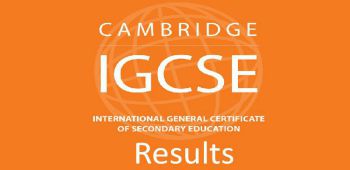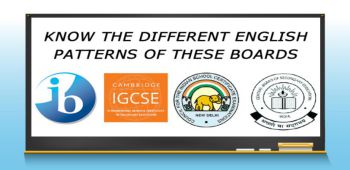Did you know that scoring good marks in Maths can be as easy and fun as it is to say it? No kidding! First, let us have a look at the portion you have before we begin to set an action plan.
Name of the Units and their weightage in Board Exam
|
Unit No. |
Title |
No. of Periods |
Marks |
|
I |
Relation and Functions |
30 |
10 |
|
II |
Algebra |
50 |
13 |
|
III |
Calculus |
80 |
44 |
|
IV |
Vectors and Three – Dimensional Geometry |
30 |
17 |
|
V |
Linear Programming |
20 |
06 |
|
VI |
Probability |
30 |
10 |
|
Total |
240 |
100 |
Details of topics and sub-topics to be covered in each unit
Unit number - I: Relations and Functions
- Relations and Functions
Types of relations: One to one and onto functions ,reflexive, inverse of a function, symmetric, transitive and equivalence relations. composite functions. Binary operations.
- Inverse Trigonometric Functions
Definition, domain , range, principal value branch. Graphs of inverse trigonometric functions. Elementary properties of inverse trigonometric functions.
Unit number - II: Algebra
- Matrices
Concept, order, notation, equality, types of matrices, zero and identity matrix, transpose of a matrix, symmetric and skew symmetric matrices. Operation on matrices: Addition and multiplication and multiplication with a scalar. Simple properties of addition, multiplication and scalar multiplication. Non-commutativity of multiplication of matrices and existence of non-zero matrices whose product is the zero matrix (restrict to square matrices of order 2). Concept of elementary row and column operations. Invertible matrices and proof of the uniqueness of inverse, if it exists; (Here all matrices will have real entries).
- Determinants
Determinant of a square matrix (up to 3 × 3 matrices), properties of determinants, minors, co-factors and applications of determinants in finding the area of a triangle. Adjoint and inverse of a square matrix. Consistency, inconsistency and number of solutions of system of linear equations by examples, solving system of linear equations in two or three variables (having unique solution) using inverse of a matrix.
Unit number - III: Calculus
- Continuity and Differentiability
Continuity and differentiability, derivative of composite functions, chain rule, derivatives of inverse trigonometric functions, derivative of implicit functions. Concept of exponential and logarithmic functions.
Derivatives of logarithmic and exponential functions. Logarithmic differentiation, derivative of functions expressed in parametric forms. Second order derivatives. Rolle's and Lagrange's Mean Value Theorems (without proof) and their geometric interpretation.
- Applications of Derivatives
Applications of derivatives: rate of change of bodies, increasing/decreasing functions, tangents and normals, use of derivatives in approximation, maxima and minima (first derivative test motivated geometrically and second derivative test given as a provable tool). Simple problems (that illustrate basic principles and understanding of the subject as well as real-life situations).
- Integrals
Integration as an inverse process of differentiation. Integration of a variety of functions by substitution, by partial fractions and by parts, Evaluation of simple integrals of the following types and problems based on them.
Definite integrals as a limit of a sum, Fundamental Theorem of Calculus (without proof). Basic propertiesof definite integrals and evaluation of definite integrals.
- Applications of the Integrals
Applications in finding the area under simple curves, especially lines, circles/parabolas/ellipses (in standard form only), Area between any of the two above said curves (the region should be clearly identifiable).
- Differential Equations
Definition, order and degree, general and particular solutions of a differential equation. formation of differential equation whose general solution is given. Solution of differential equations by method of separation of variables, solutions of homogeneous differential equations of first order and first degree.
Solutions of linear differential equation of the type:
(dy/dx) + py = q, where p and q are functions of x or constants.
(dx/dy) + px = q, where p and q are functions of y or constants.
Unit number - IV: Vectors and Three-Dimensional Geometry
- Vectors
Vectors and scalars, magnitude and direction of a vector. Direction cosines and direction ratios of a vector. Types of vectors (equal, unit, zero, parallel and collinear vectors), position vector of a point, negative of a vector, components of a vector, addition of vectors, multiplication of a vector by a scalar, position vector of a point dividing a line segment in a given ratio. Definition, Geometrical Interpretation, properties and application of scalar (dot) product of vectors, vector (cross) product of vectors, scalar triple product of vectors.
- Three - dimensional Geometry
Direction cosines and direction ratios of a line joining two points. Cartesian equation and vector equation of a line, coplanar and skew lines, shortest distance between two lines. Cartesian & vector equation of a plane. Angle between
(i) two lines,
(ii) two planes,
(iii) a line and a plane. Distance of a point from a plane.
Unit number - V: Linear Programming
- Linear Programming
Introduction, related terminology such as constraints, objective function, optimization, different types of linear programming (L.P.) problems, mathematical formulation of L.P. problems, graphical method of solution for problems in two variables, feasible and infeasible regions (bounded and unbounded), feasible and infeasible solutions, optimal feasible solutions (up to 3 non-trivial constraints).
Unit number - VI: Probability
- Probability
Conditional probability, multiplication theorem on probability, independent events, total probability, Bayes’ theorem, Random variable and its probability distribution, mean and variance of random variable. Repeated independent (Bernoulli) trials and Binomial distribution.
Prescribed books
(1) Mathematics Part I ‒ Textbook for Class XII, NCERT Publication
(2) Mathematics Part II ‒ Textbook for Class XII, NCERT Publication
(3) Mathematics Exemplar Problem for Class XII, Published by NCERT
CBSE Class 10 Maths Preparation tips
Last minute tips:
- Put as much of your hard work in the last one month
- Be determined.
Self-study is better than group study:
I am not a fan of group studies. Concepts can be cleared by anyone, but it is the self-study that matters the most at the end.
Tips on one day before the exam:
Revise all your notes one day before the exam. Also, read your chapters once so that you won't miss out the major keywords.
Importance of board exams:
Board exams are like any other exams. Just take it as a final year examination. If getting into DU is your aim then you need to score good marks, so, in this context, board exams do matter.
Filter between good and bad competition:
Filter good competition from bad competition. Some competition encourages you to do better. Don't try to pull others down and focus on yourself.




















Comments